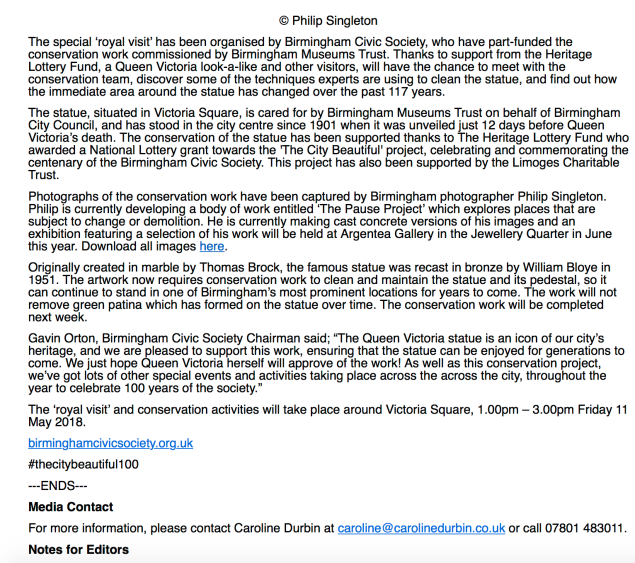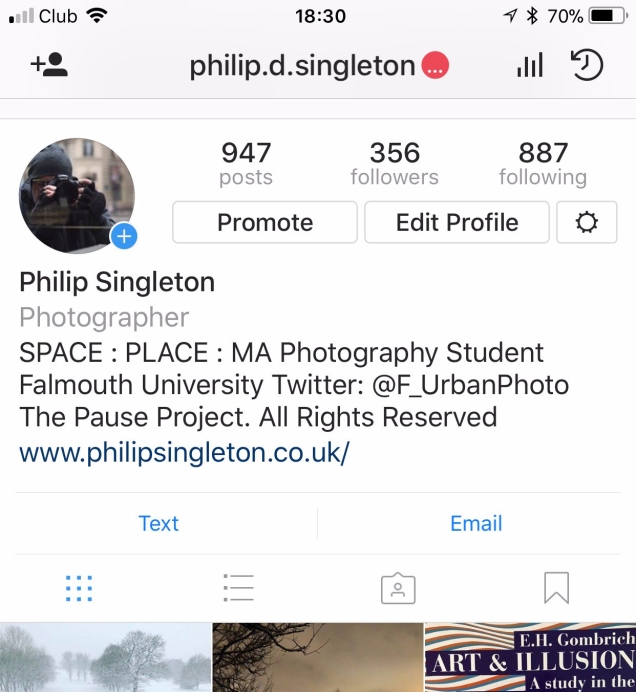Installation : Final Major Project
MA in Photography, Falmouth University, Module 5
Considered, measured, informed and applicable feedback is highly important for my own growth and to form the submission to my university as a critique of this exhibition, not only as a final product, but the ongoing evolution of practice.
Warm and lovely words were spoken to me at the launch and subsequently. Yet the cold, analytical word is harder to come by. I did solicit it in several quarters and some came.
figure 1
A senior tutor from the Birmingham City University photography BA course was the only person, to date, to use the feedback cards left for noting upon. Figure 1 sets out his note and observations. I do agree with his analysis; my ‘style’ is not wholly evolved and I am aware that it is not visually managed to the extent that I believe I can develop.
The director of New Art West Midlands came to the launch which was welcome as he gave me a portfolio review in December 2017. He asked me to meet again for coffee and we talked about the 2019 Coventry biennale and related issues. Interesting he and I talked whilst holding the demonstration concrete tablet I placed in the upper gallery – this was a strong reminder of the tactile quality of the three-dimensional work and the disadvantage of it being displayed on the gallery walls.
I received two email responses to the show, which I extract thus;
“Apologies for leaving early on Thursday. I had to get down to the Conservatoire for a concert. It was important for me to be there.
You were downstairs chatting when I left so I didn’t feel I wanted to interrupt you.
I thought your exhibition provocative in that amongst the fossilised remains of past architecture and the witnesses to human occupation and activity (Dundee Cake particularly appealed to me ). There was a yearning for something to come next.
Quite why this quotation from Orwell comes into my mind I really do not know——-“who controls the past controls the future, who controls the present controls the past”. The course of inspiration perhaps and story telling rather than political control that Orwell had in mind .
It was good to see old friends and better to see the exhibition.”
This was a cheering receipt – as the reference to ‘fossilised’ was an appropriate word applied to the work, given that I had not used it myself. It is always interesting when people pick out one image for particular celebration or examination. I am pondering the Orwell quotation and it will rest with me. The ‘Dundee Cake tin’ was referenced by others as being appealing – I clearly would, if I had the opportunity, ask why, meanwhile I assume it was because of its textual reference, orange colour ad the fact I found it percted on dim wooden structures that helped it stand out.
The second email was thus;
“Firstly thank you for your kind invitation to the opening of your exhibition at the Argentea. I imagine it has required a huge amount of effort and a great deal of self-confidence to be able to publicly display what is, in reality, hugely personal work.
I heard many positive comments during the discussions I had, and you must have been pleased at the large turnout. I hope you don’t mind but I wanted to give you my feedback by email rather than on the reverse of the card.
I thought the exhibition was professionally curated, the images on concrete in particular being very striking not only in their presentation but also in concept. I felt the images all bore a warmth that spoke to the affection you felt for your subject, almost as if they were shot on film.
I’ve seen many abandoned buildings during my career, and all the items just left behind when the people and processes move out. Your work captures something that is truly fleeting, that evokes a moment in time when all that was, at one moment, useful and maybe essential is just left behind as something no longer needed and unimportant. All of the material will be consigned to the skip.
Well done for this evening and I really hope you enjoyed what I thought was a very successful event.”
This was appreciated as it noted the effort and sense of exposure that made the show what it was in terms of a personal endeavour and time investment that risked or conveyed a personal observation, journey and development. The film reference I believe came from the nature of the decal film that was commented upon my a handful of people I spoke to, as it has a mat finish and a degree of translucency that allows the concrete surface and patina to bed with the images as viewed.
 Figure 2
Figure 2
One person who attended told me he though this image, fig 2 (Roundhouse) was the “saddest on show” which was intriguing as it is not how I read the image, I believe he was seeing a dying ember at the death throes to extinguishment. Plus to refer to it as the saddest perhaps calibrates it to a show of sad emotion and this is perhaps the most extreme example, in his mind
Social media tends to be engaged with when people have been provoked in a response, positive or negative two were notable as they resulted in retweets and comments. The first, fig 3, was the outcome from a rather nice surprise in that Beanland said the nicest things which perhaps do not further one’s critical awareness do however help promote th show and the practice, thus (I encountered this on Instagram and Twitter). The second, fig 4, referenced my history of working in regenration and thus having an involvement with change and thus demolition and refurbishment.

Figure 3

Figure 4
Other Reflections
Because there had been debate amongst tutors and the gallerist about the mounting and framing of the three prints that had while lines around the edges (between the photographic frame and mask) I felt prepared to address and acknowledge it. It did not come. This clearly does not indicate acceptance, but it was not highlighted.
I watched a number of people in the projection space and the dwell time tended to be over 5 minutes. The stream of images was under 4 minutes, thus they were watching the full diptych roll all the way through. Some walked through the two projector beams to position themselves at the far side of the space, others tucked in to the left side of the space entry opening which, in my view, having tested locations, was the optimum viewing point for two screens. It is perhaps a little ambitious an observation but people seemed to be entranced by the roll.









 Figure 2
Figure 2

















